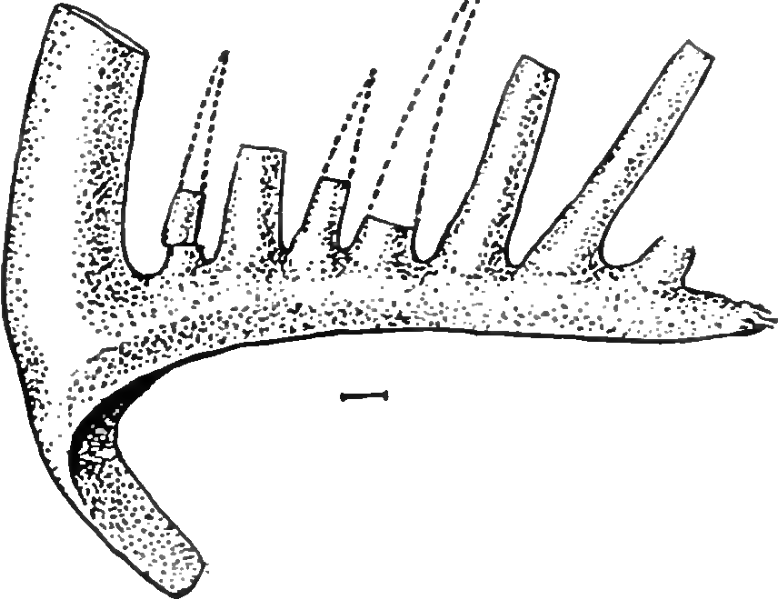<![CDATA[In 1909 a Burgess Shale fossil was found in the richest Cambrian fossil deposit in the world, in Canada's Rocky Mountains. The fossil was discovered by former head of the Smithsonian Institute, Charles Doolittle Walcott, he called the strange looking specimen Canadia sparsa, a misnomer as he had mistakenly identified it as an ancestor of today’s earthworms and leeches. The specimen was reported to have had seven pairs of spiny legs and a row of soft tentacles along its back. It was considered to be an evolutionary misfit because of its features. Now scientists have reclassified the species as a worm. About sixty years after its discovery, Canadia sparsa was renamed Hallucigenia sparsa because scientists had started to disagree with Walcott’s annelid classification. Twenty years later, in 1991, Lars Ramskold of the Swedish Museum of Natural History led a team that realized that the tentacles reported to be on the specimen’s back were actually legs, what were thought to be spiny legs were just spines, and the featureless grey head was actually the tail. They argued that the fossil had initially been interpreted backwards and upside-down. Now scientists from Cambridge University have concluded that Hallucigenia was an ancestor of the velvet worms mostly found in tropical rainforests around the world, ending fears that the specimen signified an evolutionary dead end. The scientists at Cambridge used the specimen’s claws to identify the Cambrian species. Based on fossil records the Cambrian Radiation, or Cambrian Explosion, refers to the rapid appearance of major phyla in the animal kingdom, around 530 million years ago. Before this, life on earth was mostly made up of single-celled organisms, which sometimes organized themselves into colonies. Over a period of 70 to 80 million years, the rate of evolution sped up to develop the species that are similar to the animals we see today. The Cambrian expansion ended about 488 million years ago. Since the 1970s, the Hallucigenia was thought to be closely related to the velvet worm, but evidence linking them was hard to find, plus the Hallucigenia’s claws hadn’t been studied in detail like they were recently. It was through analysis of the claws that the connections between the prehistoric creature and today’s creatures were drawn. The scientists found that the spines on the worm’s back were made of a keratin-like substance, similar to that in our fingernails. This can also be found in the jaw regions of today’s velvet worms. Modern velvet worms are themselves very unusual creatures. They are divided into eighteen species which all prey on smaller insects. They capture their prey by secreting a sticky substance. They are also able to produce live young. One of the biggest talking points will be the link found between onychophorans (velvet worms) and arthropods (insects, crustaceans and arachnids). The Hallucigenia find shows that they are distant cousins. Research shows that arthropods are actually closer relations to water bears, which are able to survive vacuums and sub-zero temperatures. The Cambridge scientists see the recent discovery as a bridge linking pre-Cambrian organisms to what we have today. The study was published in the journal “Nature”. ]]>
Mystery Ancient Fossil Identified
